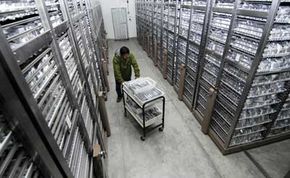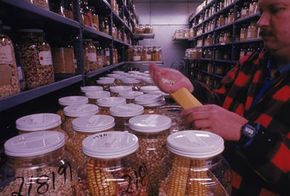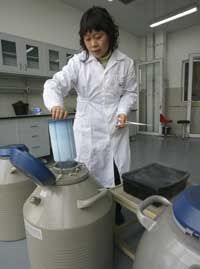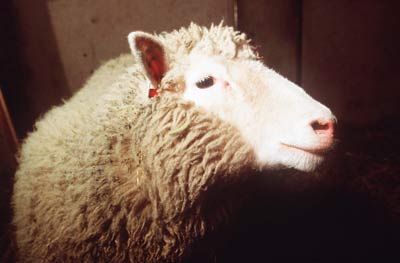It's pretty much impossible to introduce the idea of gene banks without bringing up the biblical story of Noah. The Old Testament figure crowded two of every animal onto an enormous wooden boat in order to ride out a catastrophic flood. The rains came, the boat carried its precious cargo above the waves and everything else drowned in the depths. After the waters finally receded, the animals disembarked to repopulate a ravaged, waterlogged Earth.
Whether you take this story as fact or myth, Noah's undertaking shares many striking similarities with current efforts to establish gene banks. There are no giant wooden ships this time around, and the scope goes far beyond rounding up livestock and exotic animals. Instead, researchers busy themselves collecting genetic samples from thousands of plants and animals and storing them away in frozen vaults.
Advertisement
An organism's genes are essentially its blueprints, painstakingly detailed strands of DNA in every living cell. By properly freezing this genetic material, we can preserve the blueprints for ages to come.
On one hand, these efforts are very much in keeping with Noah's. There are currently more than 900 endangered animal species on the planet, according to the U.S. Fish and Wildlife Service. Instead of facing down a flood from God, they're largely threatened by conditions brought on by centuries of human expansion, exploitation and pollution. If we preserve their genes now, scientists think we will be able to reintroduce them through cloning later. Likewise, many species of crops are threatened as well.
But gene banks are more than just a global backup system for the next time the human race accidently deletes an important file. By collecting the genetic master plans for the planet's plants and animals, we're better able to study the inner workings of the natural world.
In this article, we'll look at current efforts to collect and store the genes of Earth's living creatures, from food crops and extinct wildlife to the DNA profiles of entire human populations. You could say we're saving up for a rainy day.
Advertisement



